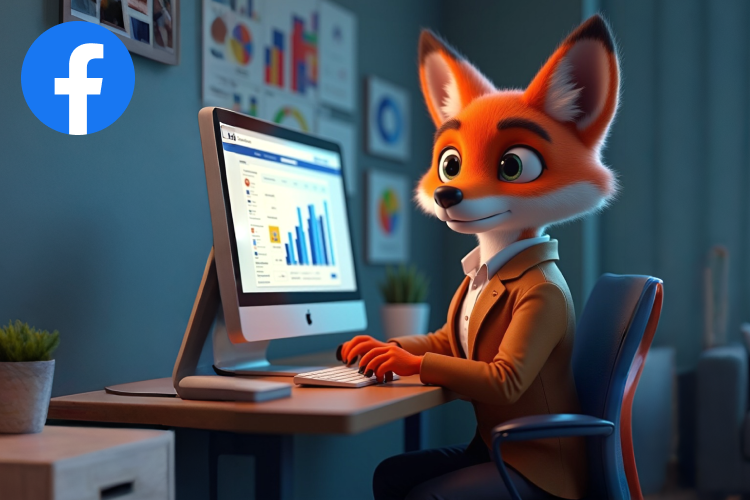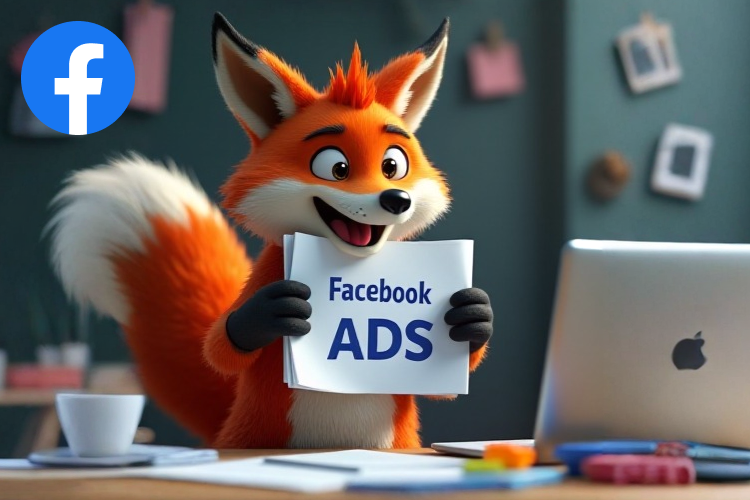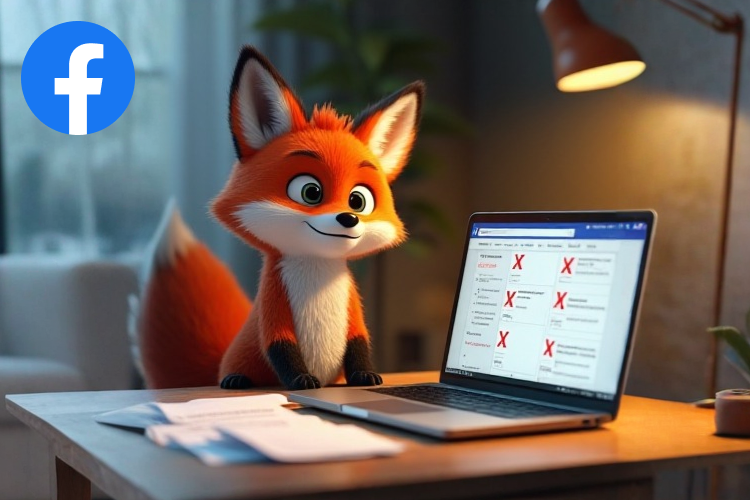Creating engaging Facebook ads

- Facebook Ad Types: Choosing a Format
- Basic ad formats
- How to choose the right format for your business
- Examples of successful use of different formats
- How to write text that attracts customers
- The role of headlines in Facebook Ads
- Using calls to action
- Secrets of creating emotional content
- Using images and videos for advertising effectiveness
- Why visual content is important
- Creating effective images for Facebook Ads
- Using video in ads
- Visual consistency and branding
- Testing and analysis
Facebook remains one of the most powerful platforms for advertising thanks to its huge audience and advanced targeting system. But even the best targeting will not bring results if your ad does not interest the user. In a fierce competition for the attention of potential customers, it is necessary to create ads that will not only appear in the feed, but also attract attention, arouse interest and encourage action.
Facebook advertising is more than just text and images. It’s a combination of the right format, a strong text message, and visual content that resonates with your audience. Which ad format should you choose? How to write compelling copy? What images or videos will work best?
In this guide, we’ll look at all of these issues and learn how to create ads that deliver real results.
1. Facebook Ad Types: Choosing a Format
Facebook offers a wide range of ad formats, each with its own unique features and suited to different business goals. In this section, we’ll look at the main ad types, their benefits, and recommendations for choosing the best format for your business.
Basic ad formats
Facebook Ads has several key formats that can be used for different purposes, such as increasing brand awareness, driving traffic, or increasing sales. Here are the main ones:
- Photo ads
- This is the simplest and most common type of ad. It consists of a single image and accompanying text.
- Suitable for a quick and clear presentation of a product or service.
- Video ads
- Use video to capture users’ attention. Video ads can be short or long, depending on the goal of the campaign.
- Good for showing products in action or telling a story about a brand.
- Roundabout
- Ads with multiple images or videos that can be scrolled. Each slide can contain a different product or details about the same product.
- Suitable for showcasing multiple products or different aspects of a single product.
- Collection
- Ads that allow users to browse a collection of products directly on Facebook. They typically feature a large image or video at the top and several smaller product images at the bottom.
- Suitable for online stores that want to quickly present several products.
- Canvas (Instant Experience)
- Interactive ads that open a full-screen experience when clicked. These can be photos, videos, text, and even buttons.
- They work well to create an immersive and deep experience for users.
How to choose the right format for your business
When choosing an ad format, it is important to consider several factors:
- Campaign Goal : If you’re looking to increase sales, photo or carousel ads might be a better fit. If your goal is to increase brand awareness, consider video ads.
- Audience : Consider what types of content your target audience will be most interested in. For example, younger audiences may be more likely to engage with videos, while older audiences may appreciate static images more.
- Budget : Some ad formats can be more expensive to create. For example, producing a video may require more resources than a photo.
“Successful advertising starts with choosing the right format that best suits your business goals and your audience’s interests.”
Examples of successful use of different formats
1. Photo ads for small businesses
A small local bakery used simple photo ads to showcase their freshly baked cakes and pies. The visually appealing images led to a 20% increase in orders.
2. Video ads for a tech startup
A startup developing a smartwatch launched a video ad demonstrating the device’s functionality. This allowed it to show the product’s unique capabilities and increased interest from potential buyers.
3. Carousel for an online store
An online clothing store used carousel ads to showcase different shoe models in a new collection, helping to reach different audience segments and increase sales.
Choosing the right ad format is a key step to a successful Facebook advertising campaign. Understanding the different types of ads and how to use them will help you effectively achieve your business goals. In the next section, we’ll look at how to write copy that attracts customers.
2. How to write text that attracts customers
Your Facebook ad copy is incredibly important. It can either attract or repel your audience. In this section, we’ll look at how to write copy that not only grabs attention but also encourages users to take action.
The role of headlines in Facebook Ads
The headline is the first thing a user sees and it determines whether they will pay attention to your ad. In Facebook Ads, headlines should be short but concise to immediately grab the audience’s attention.
“A strong headline is like a door to the world of your product. If that door is closed, no one will come in.”
Strategies for creating effective headlines:
- Be specific : The headline should immediately convey the essence of your offer.
- Use numbers : For example, “Get 50% off today!”
- Ask a question : This makes users think and can grab their attention.
Example: An ad for a programming course used the headline: “Dream of becoming a programmer? Start today!” This question and call to action immediately caught the attention of young professionals.
Using calls to action
A call to action (CTA) is what prompts users to take the next step. It’s important that the CTA is clear and direct.
“Your CTA is the bridge between user interest and action.”
Tips for creating effective calls to action:
- Be clear : “Buy now”, “Learn more”, “Sign up”.
- Use active verbs : This adds energy and calls for action.
- Create urgency : For example, “Today only!” or “Promotion ends tomorrow!”.
Example: An online electronics store used the CTA “Order now and get free shipping,” which significantly increased conversions.
Secrets of creating emotional content
Emotions are a powerful tool in marketing. People make decisions based on emotions, so text that evokes an emotional response has a better chance of success.
“People will forget what you said, but they will remember how you made them feel.”
How to create emotional content:
- Tell stories : People love stories, they help connect and evoke emotions.
- Use words that evoke emotions : Words like “exciting,” “inspirational,” “favorite” create certain feelings.
- Focus on the needs of the audience : For example, the fear of losing something or the joy of possession.
Example: A campaign to support homeless animals told the story of a dog found on the street and showed photos of his happy new life. This caused a strong emotional response and increased donations.
Facebook ad copy is your chance to connect with your audience. By using the right headlines, calls to action, and emotional content, you can not only grab attention but also motivate users to take action. In the next section, we’ll look at how to use images and videos to boost the effectiveness of your ads.
3. Using images and videos for advertising effectiveness
Visual content in Facebook Ads plays a key role in capturing user attention. In this section, we’ll take a detailed look at how to create and use images and videos to maximize the effectiveness of your ad campaigns.
Why is visual content important?
The modern Facebook user sees hundreds of ads every day, so it’s important to stand out. Images and videos are the first thing a user sees, and they’re often the deciding factor in whether a person continues to view your ad.
“A picture is worth a thousand words, but a video can tell a whole story.”
How visual content affects engagement:
- Eye-catching : Bright, high-quality images and videos instantly capture the eye.
- Conveys emotions : Images and videos can evoke emotions that are harder to achieve with text.
- Leaves a lasting impact : Visual information is better remembered than textual information.
Creating effective images for Facebook Ads
Ad images should be high-quality, relevant, and engaging.
“The first thing a user sees is an image. It should say everything you need to say without words.”
Tips for creating quality images:
- High quality : Avoid blurry or pixelated images.
- Brightness and contrast : Use colors that make your image stand out from other posts.
- Relevance : The image should match the content of the ad and be understandable to the audience.
Example: An online clothing store used images of models in bright suits against a city backdrop. This attracted the attention of an urban audience and increased sales by 25%.
Using video in ads
Video allows you to tell the story of your brand or product more dynamically and in depth.
“Video can turn your ad into a mini-movie that draws the viewer in from the first second.”
Strategies for creating effective videos:
- Brevity : Videos under 15-30 seconds are more likely to be watched to the end.
- The first few seconds : The most important information should be at the beginning to grab attention immediately.
- Subtitles : Many users watch videos without sound, so it’s important to add subtitles.
Example: A restaurant created a video about the cooking process of its dishes, showing fresh ingredients and happy customers. This whetted the appetite and led to a significant increase in reservations.
Visual consistency and branding
Your visual content should reflect your brand identity.
“Visual style is the face of your brand in the digital world.”
How to achieve consistency:
- Color palette : Use the same colors as in the logo and on the website.
- Fonts : Choose fonts that match your brand style.
- Symbols and logos : Include your logo in all images and videos to increase brand awareness.
Testing and analysis
Images and videos need to be constantly tested to find the most effective options.
“Even the best image may not work if it is not tested.”
Testing tips:
- A/B testing : Create multiple versions of your ad with different images and videos to determine which one performs best.
- Analyze results : Use Facebook analytics to understand which visual elements engage your audience the most.
Images and videos are powerful tools that can significantly improve the effectiveness of your Facebook advertising campaigns. When used correctly, you can create engaging content that engages your target audience and increases conversions.



